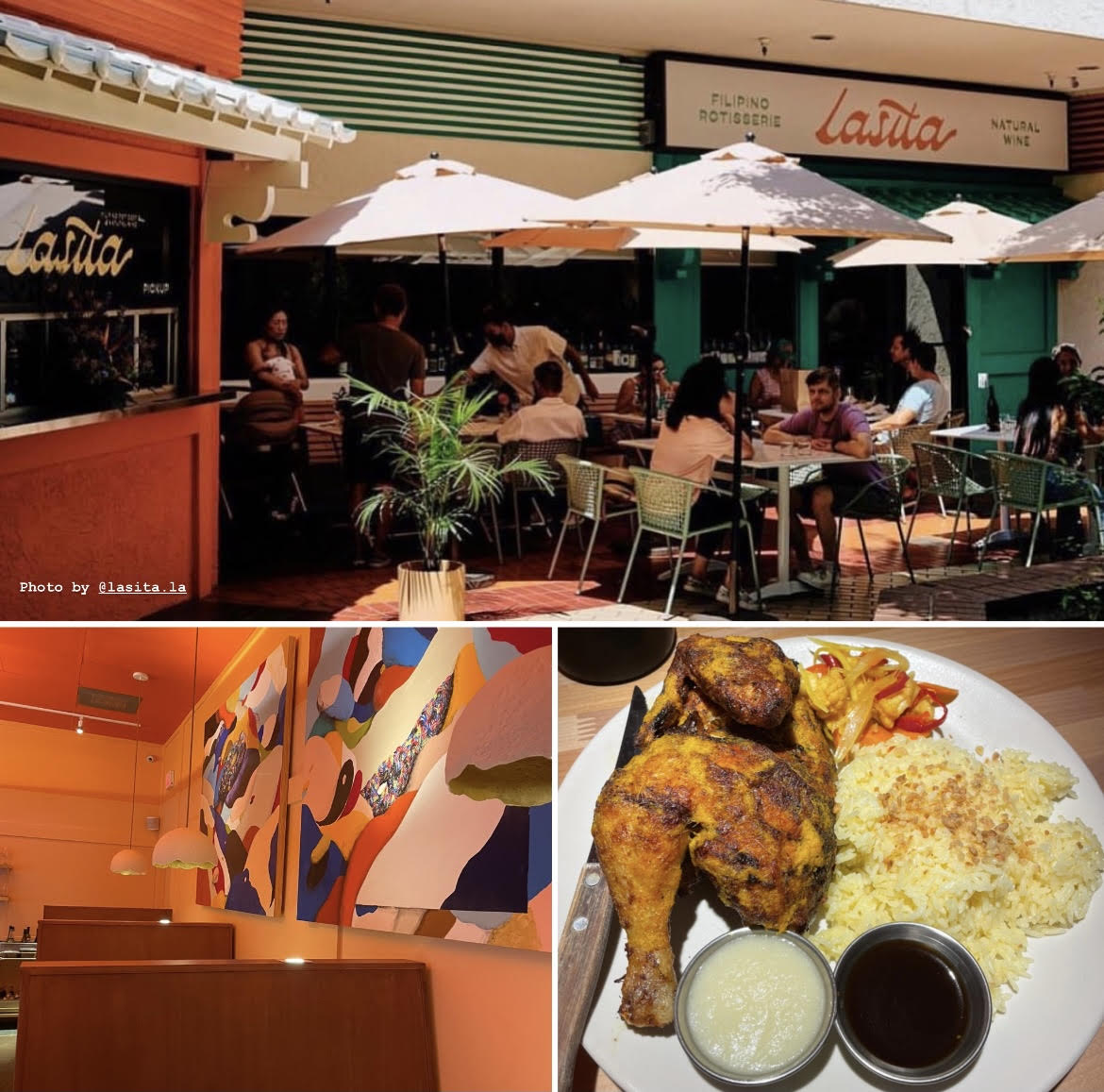
Lasita has been the talk of the town for a while now. Filipino-American brothers Chase and Chad Valencia originally opened the space in 2017 under the name Lasa — same location, but a very different atmosphere from Lasita. At Lasa, guests were made to feel as if they were dining at a traditional Filipino household.
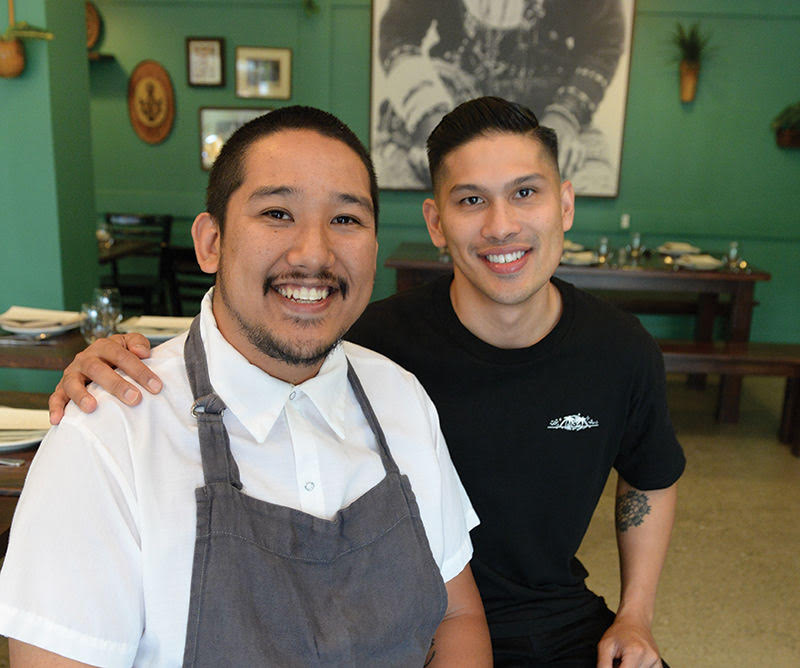
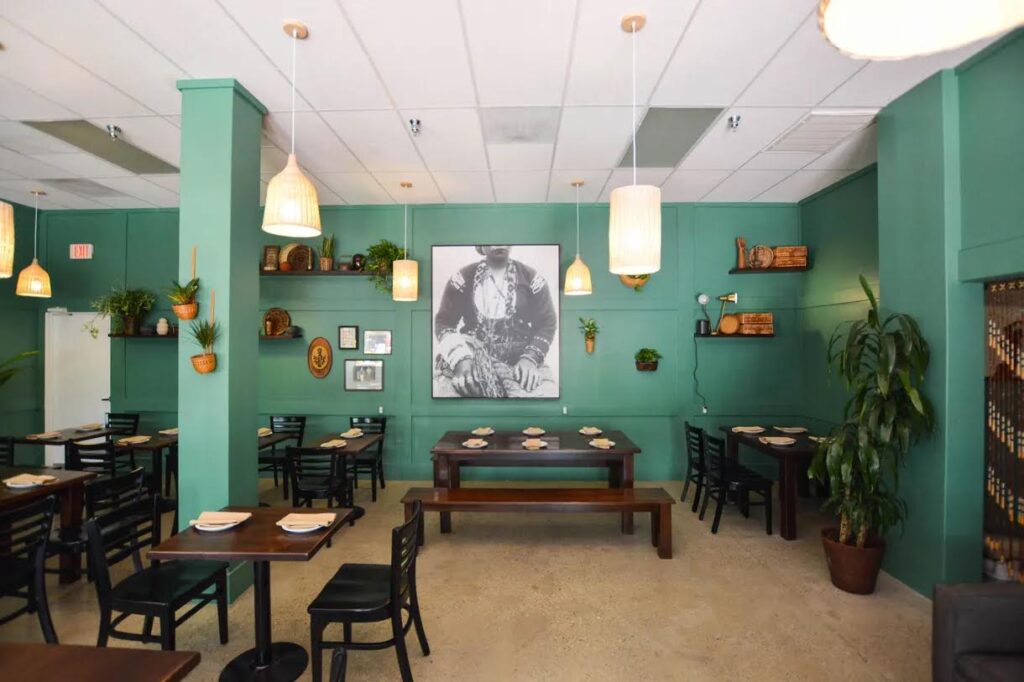
Lasa closed at the height of the pandemic. It was during this time that Chase decided to step down to focus on his family. In 2021, Chad took over the business with his business partner, chef Nico de Leon. They revamped the space and opened Lasa under a new name: Lasita.
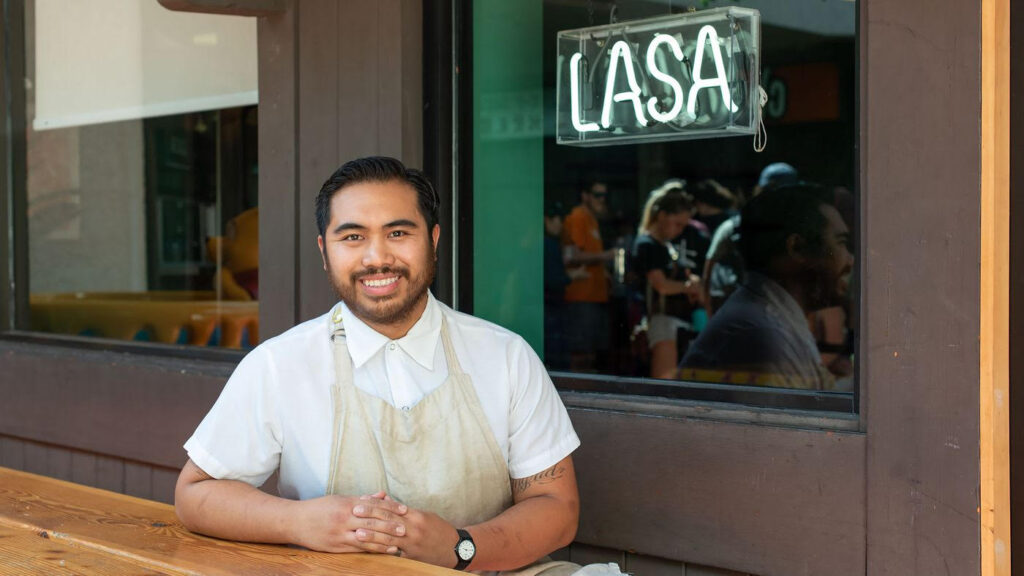
Chad mentioned in an interview with Resy.com that during the pandemic, they started serving chicken inasal and pork belly lechon through the takeout window. It was a hit and they started seeing the same people once a week, whereas at Lasa they’d see the same people once every few months. It was then that they decided to change the menu. Just like Lasa, Lasita offers a different twist on traditional Filipino food.
A friend of mine, Philip, owner of the gallery Ends of the Earth in Long Beach, goes there very often, but after seeing Lasita featured on Bon Appetit’s list of 50 best new American restaurants in 2022, I knew that was my cue to go.
Since this was my first time ever trying out Filipino food, I asked the waiter what I should order and without a doubt, he recommended the chicken inasal.
He said: “Filipino rotisserie is different in a way based on how it is brined and stuffed and the seasonings they use.” After I went to Lasita, I did some research on it. The components that you’ll find in the chicken inasal are a mixture of garlic, bay leaf, onion, black pepper, soy sauce, and patis (Filipino fish sauce) — and it’s always cooked on a charcoal spit.
The atmosphere at Lasita is very modern and chic. It feels very immersive and I loved looking at the paintings as I was waiting for my food. The overhead lightning was great because it let me appreciate the food even more. There is a long countertop in the middle of the space where they have all their natural wines on display — on the other end there’s the cash register where people pay at the end of their meals. When I went there, most people chose to be sat in the patio, but I liked the indoor atmosphere better.
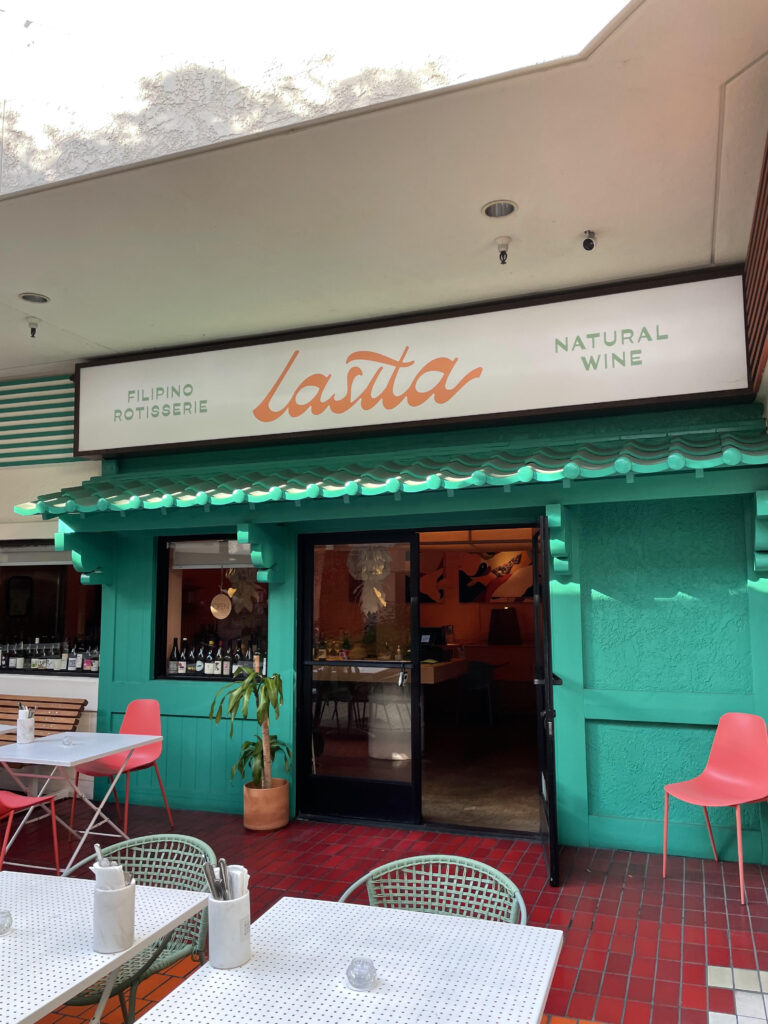
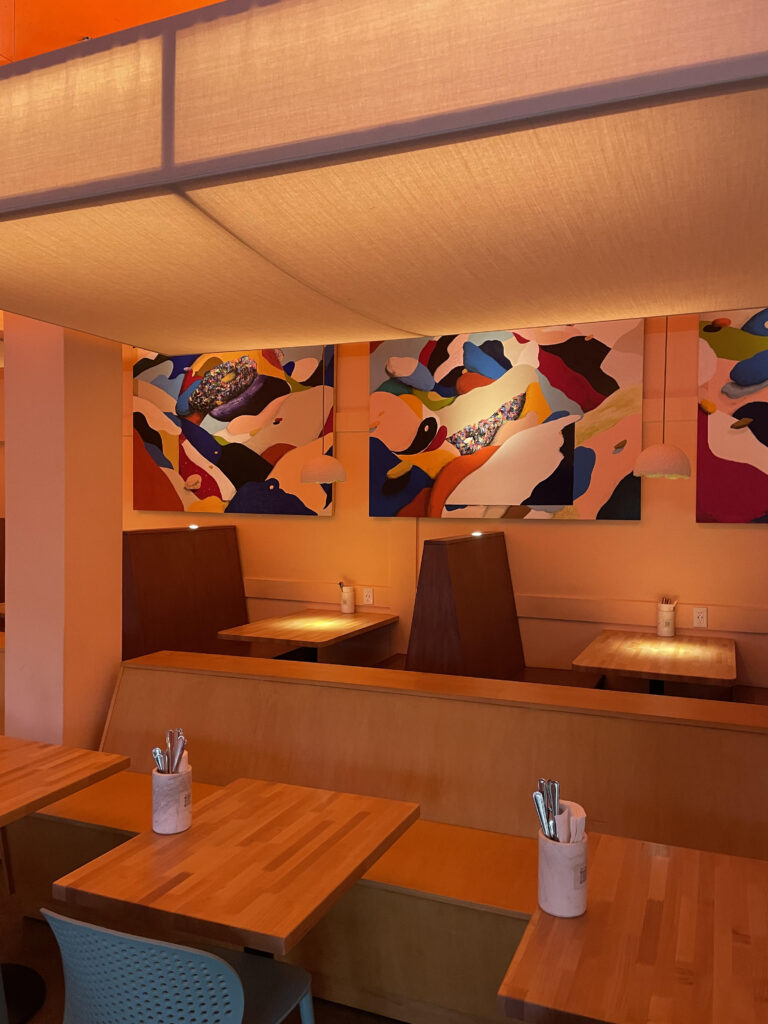
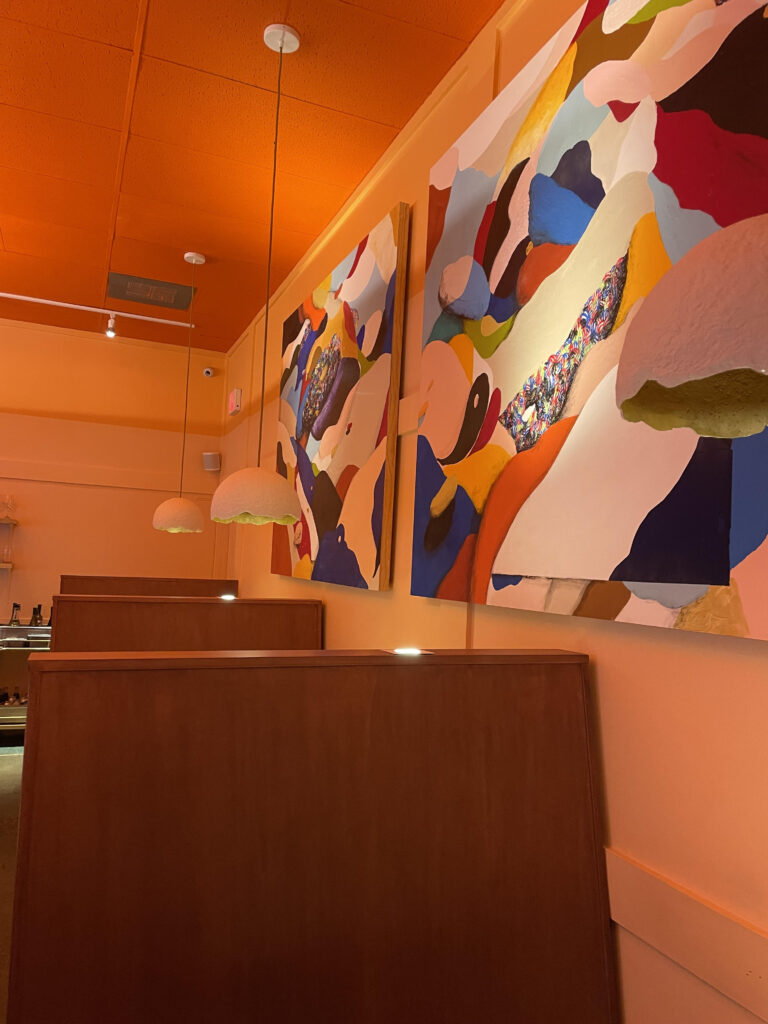
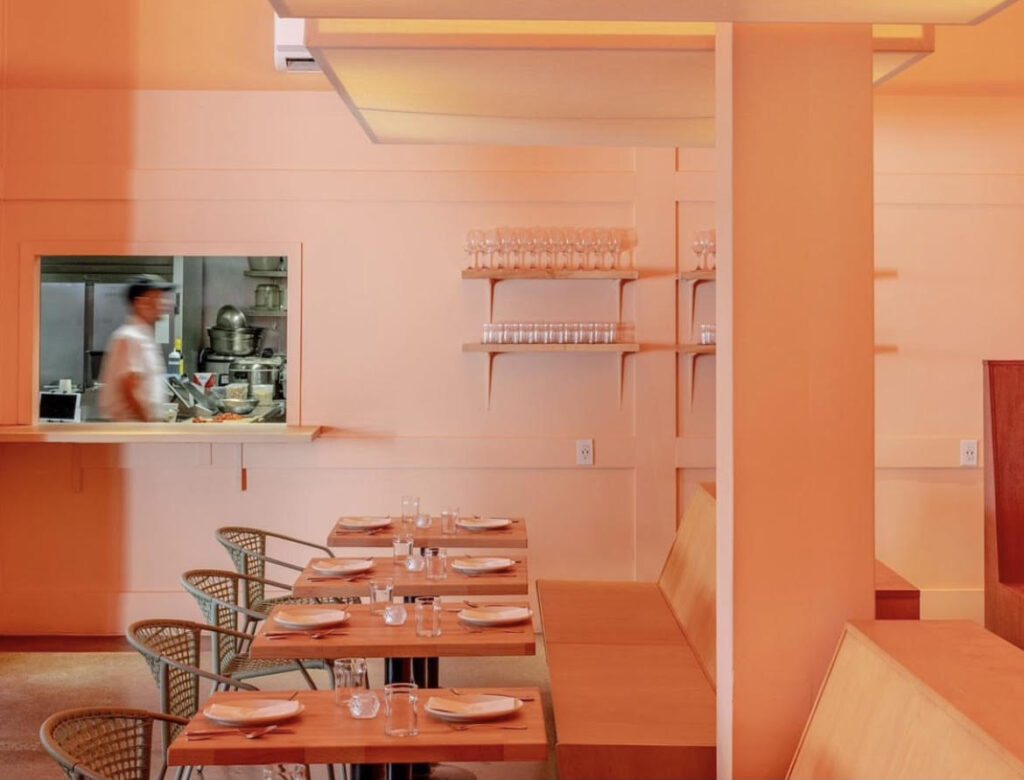
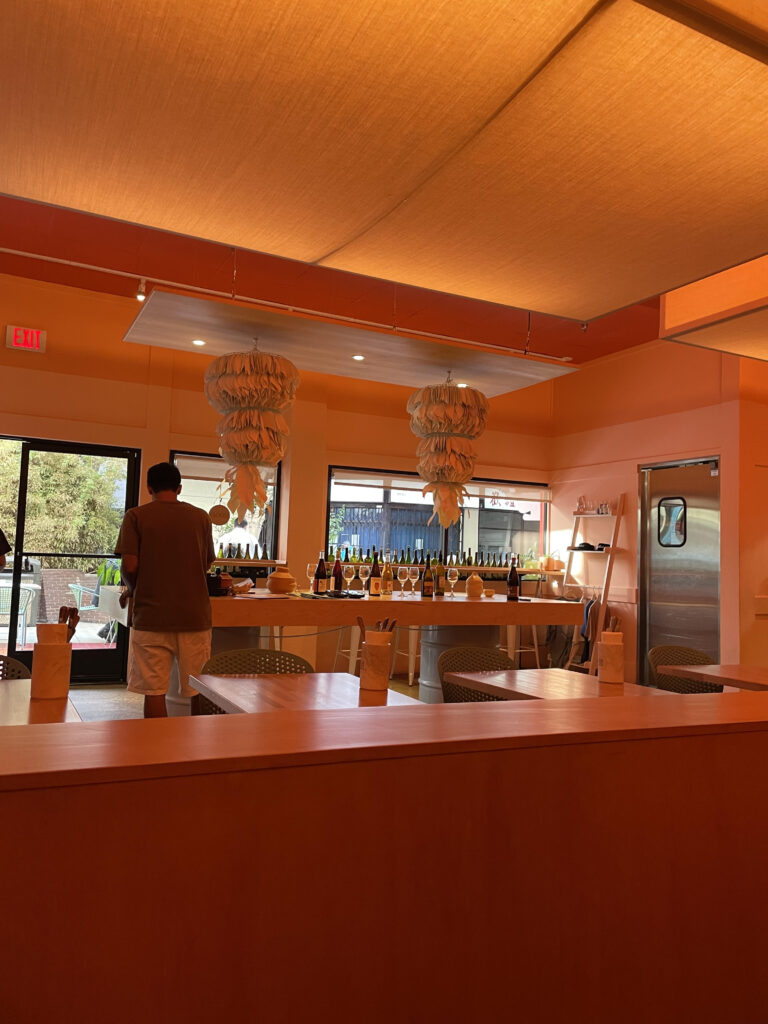
Chad took my order and commented: “If you go to the Philippines you won’t find this exact same chicken. It’s our own take on this dish that makes it special.”
He suggested that I order The Plate, a dish that was specifically made for single diners like me. The Plate, which is not on the menu, comes with half a chicken, atchara (pickled seasonal vegetables) and rice of your choice (garlic fried rice or chicken fat rice).
I heeded his advice. If I were to order the sides separately, the bill would have been more expensive. However, you’re always more than welcome to order more sides if you’re left hungry. The Plate is $22, which is a great value for what you get. It also comes with two sauces: garlic and toyomansi sauce. The latter is a classic Filipino dipping sauce, which is very similar to soy sauce.
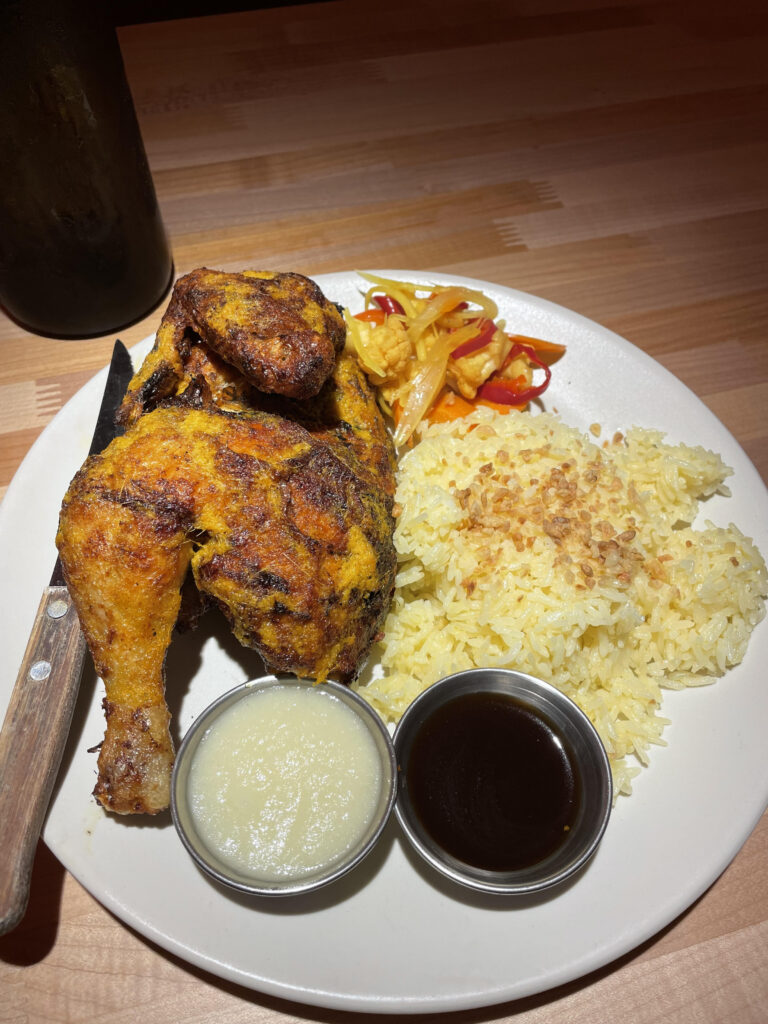
Usually when I eat rotisserie chicken, I tend to leave the skin, but it was hard to ignore the excellently crispy, smoky skin with hints of garlic. The inside was so tender and soft, but the best part for me was the sauces. Both the chicken and the rice are garlic flavored, but it’s very subtle. If you want the garlic flavor to hit you in the face, pairing the sauce with the chicken will be an amazing experience.
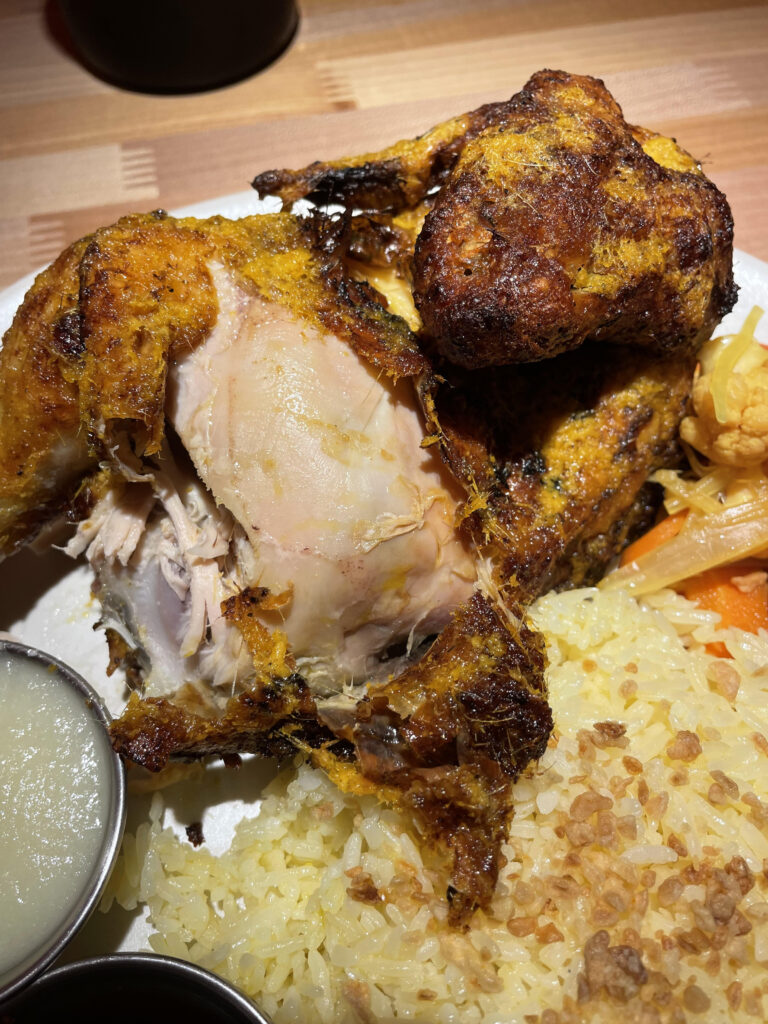
Enhancing the flavors by mixing and matching the sauces is pretty much what made my whole experience. Once I started, I couldn’t stop! The chicken went well with either sauce, but the garlic fried rice paired much better with the toyomansi sauce. The contrast of the sticky texture of the rice and the citrusy hint of the toyomansi were heavenly! Sooo good.
I didn’t pair the pickled veggies with any of the sauces because these were already seasoned with sweet turmeric vinegar brine. After the mixing and matching of sauces with the chicken and rice, I really liked eating the atchara as a way to finish my dish: sweet, sour and tangy. I wish they had added more. Nonetheless, my taste buds were very satisfied with this seemingly simple yet incredibly diverse flavorful meal.
For dessert, I was really looking forward to trying the Calamansi Cream Pie by the Filipino bakery Laroolou, but they were sold out. Chase said that they had sold out on Saturday. This is what it looks like.

I ended up ordering the ube malted crunch ice cream from the popular ice cream shop Wanderlust Creamery. In my opinion, the ice cream texture was too thick, although the candied pinipig redeemed it by giving it a nice, crunchy texture. You could also add a drizzle of condensed milk to the ice cream for an extra 50 cents.
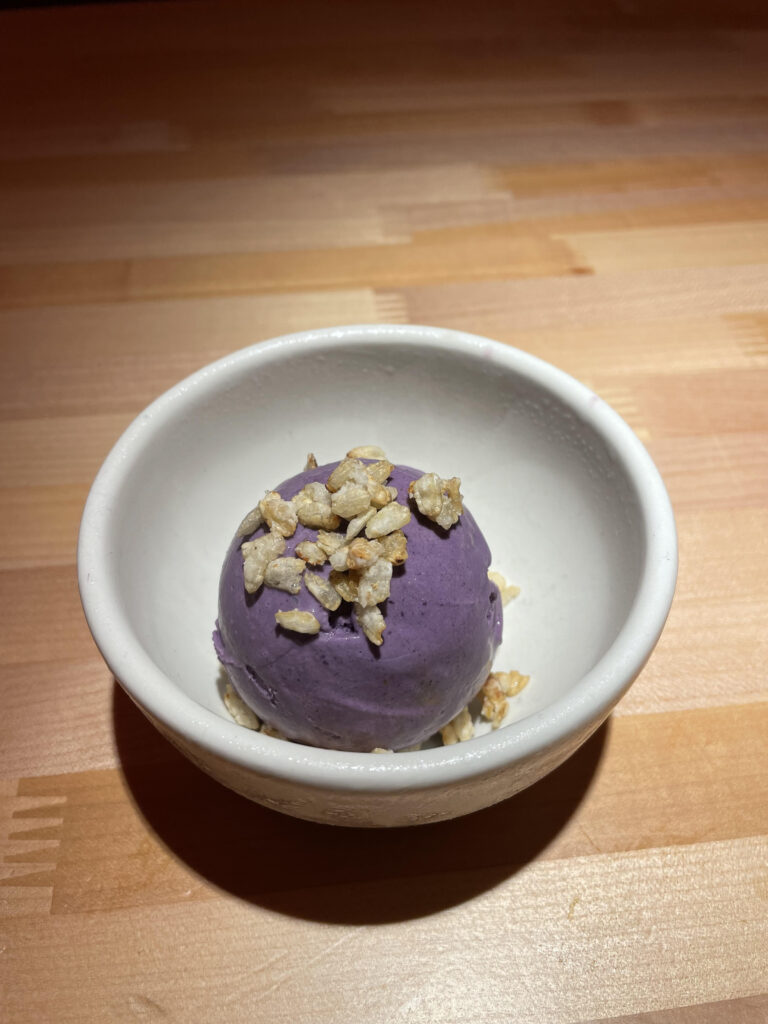
The other option for dessert was the Mango Sticky Rice ice cream, also by Wanderlust. If you want a homemade dessert, know that desserts at Lasita aren’t exactly their strong suit.
If you’re not too full after your meal, I suggest heading over to Tito Rudy’s, which is owned by the same chef, Nico de Leon. The business was named after Nico’s father and it offers Halo-halo, which is a popular shaved ice dessert in the Philippines. The kiosk is outside in the plaza and is open Thursdays to Sundays from 5 to 10 pm. I went there the week before my dinner at Lasita and talked to Nico, who said that he was looking into expanding the hours.
Note: Make sure to check the Instagram page first if you want to go because the schedule changes quite a bit.

I asked Nico if he could give me a breakdown of the Halo-halo. He said:
“Halo-halo translates to mix mix. The idea is the mix of ingredients that are present. The classic one that we serve is a good introduction to what you’d get in the diaspora of the Philippines. The other flavors that we introduce here at Tito Rudy’s kind of take that same idea of mixing ingredients but we apply what we have seasonally here in California.”
The main ingredients are crushed ice and condensed milk. Then, there are a myriad of ingredients that go into it like coconut jelly, flan, sweetened beans, purple yam jam, tapioca pearls and fruits, among others. The Halo-halo is always topped with a scoop of ice cream and is always served in a tall, clear glass. It is a very refreshing treat that helps combat the sweltering humid heat in the Philippines.


The signature flavor at Tito Rudy’s is the ube flavor, but I was feeling adventurous that day and had the strawberry one. The ingredients were: macerated strawberries, silken tofu, condensed milk ice cream, miso, bb tapioca, candied pinipig, and strawberry sunflower cracker.
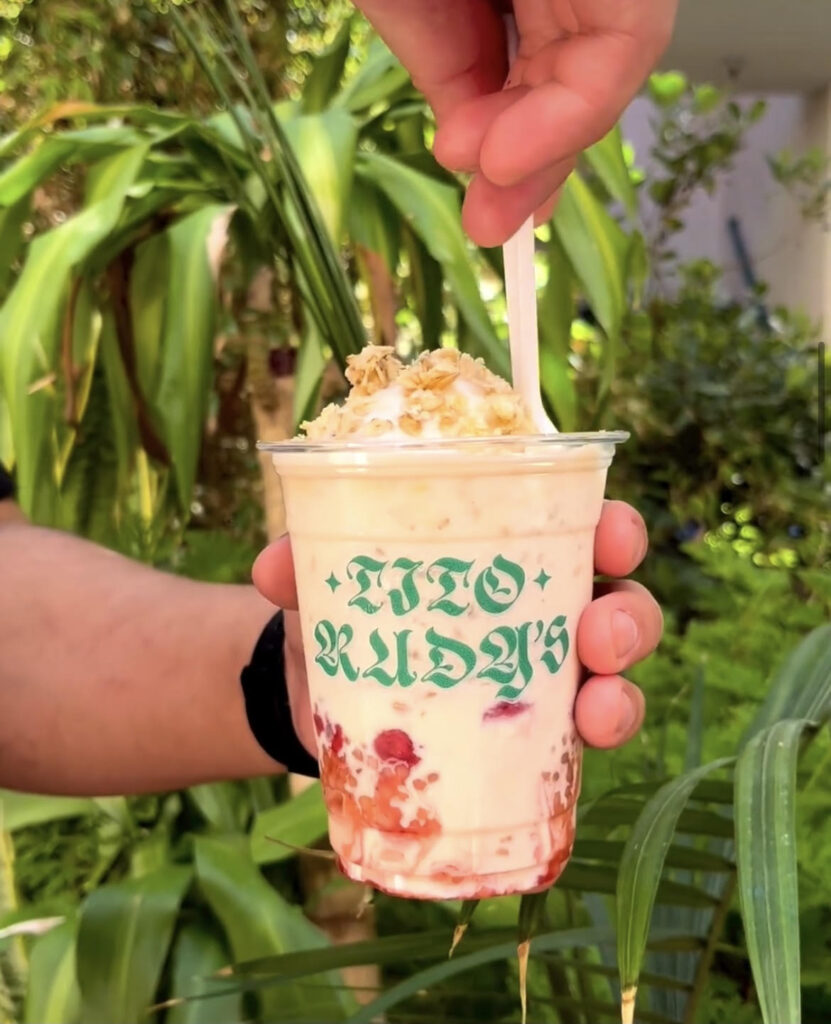
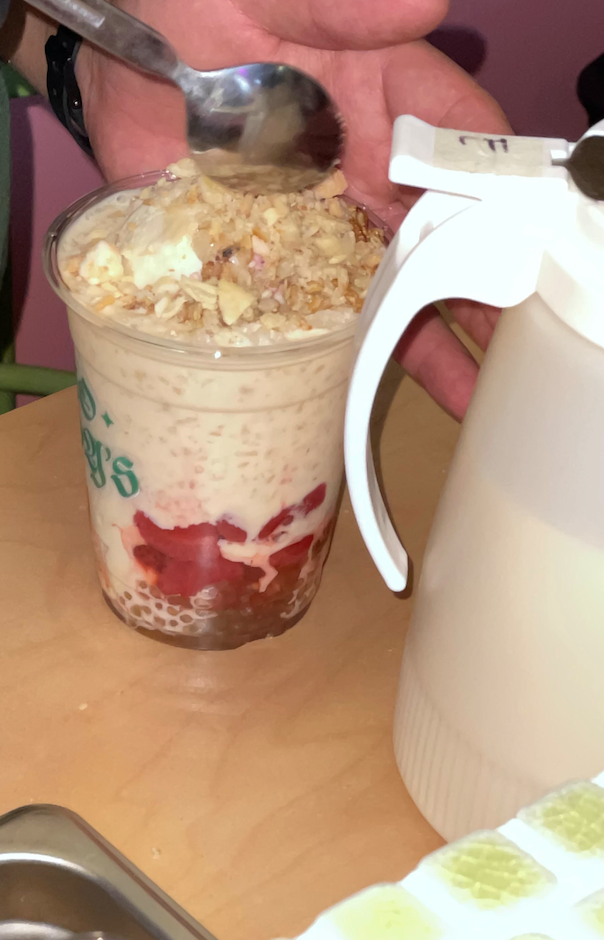
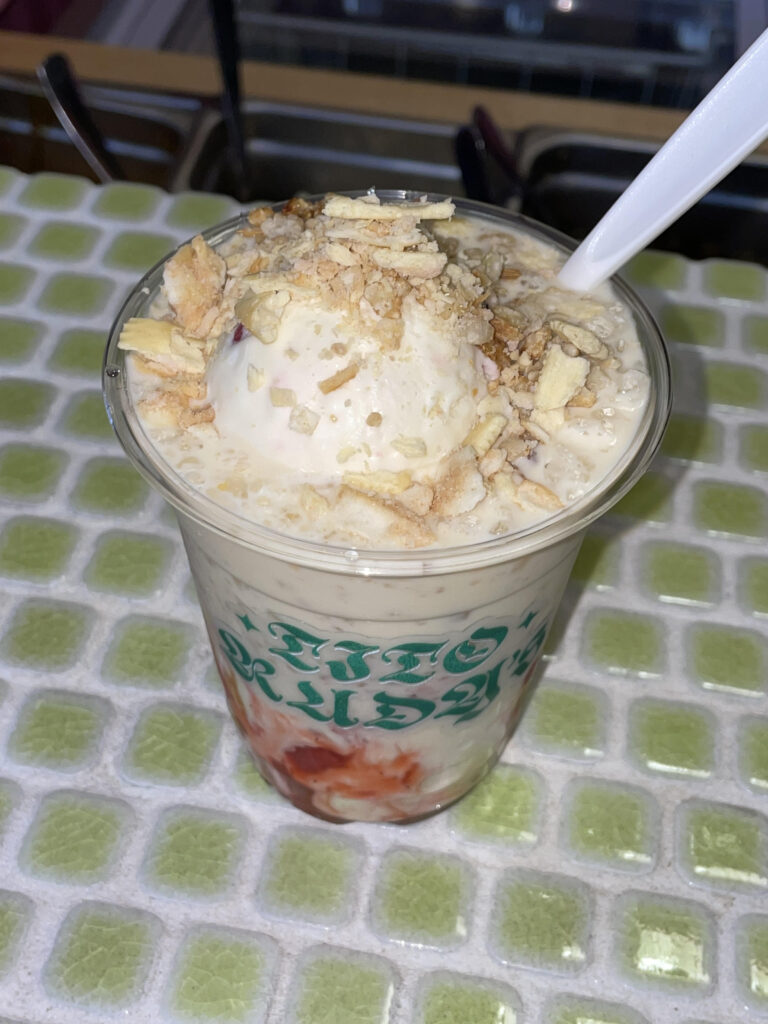
The ingredients of the Halo-halo vary a lot depending on the flavor, so the strawberry is very different from the classic. In other words, no Halo-halo is the same.
I loved the combination of the strawberries and the condensed milk ice cream. Overall, the Halo-halo was like a cross between a milkshake and a boba tea, but what makes the Halo-halo an enjoyable experience is the contrasting textures: sticky, liquid and crunchy.
I asked Nico, “Are you also supposed to eat the crushed ice?” He said yes. You’re also supposed to give it a good stir before you eat it, which I didn’t understand how to do because the cup was almost overflowing.
I can’t wait to go back to Lasita to have the amazing chicken inasal with the rice and the sauces. You know a meal was good when you’re still thinking about it, and that’s what happened to me at Lasita.
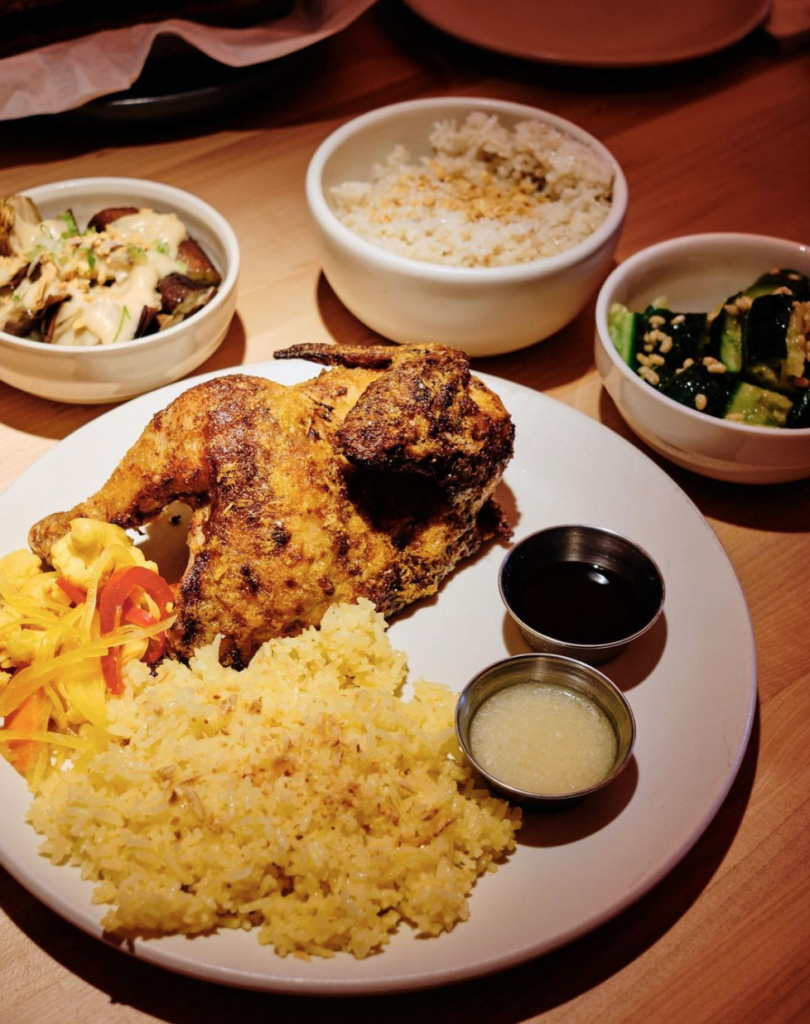
Then, if you’re not too full and want to get a taste of the Philippines’ most famous dessert, head over to Tito Rudy’s (Thursday-Sunday) to end your Filipino eating experience…
Instagram @Lasita.la
NO RESERVATIONS. It’s first come, first served!
Address: 727 N Broadway #120, Los Angeles, CA 90012. Far East Plaza
Hours: Tuesday-Saturday 5-10pm.
Tito Rudy’s Instagram @titorudys





